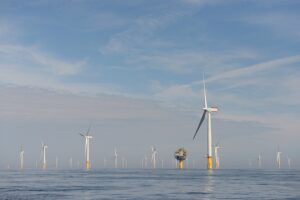Clean hydrogen could be cost-competitive with existing industrial fuels like natural gas, and with emerging energy storage technologies like batteries, by 2025, a new CSIRO report has claimed.
The National Hydrogen Roadmap report, published on Thursday by Australia’s premier research agency, says Australia has an “urgent” opportunity to establish a “hydrogen economy,” that would allow its rich renewable resources to be exported around the world.
The report is the latest – following reports from chief scientist Alan Finkel and ARENA last week – to focus on hydrogen gas – derived primarily by splitting water, using either fossil fuels or zero emissions sources – as a “versatile energy carrier and feedstock.”
Using renewable energy, the report notes (and that is the CSIRO’s stated focus), hydrogen can enable deep decarbonisation across the energy and industrial sectors, replacing natural gas as a source of heat as well as a potentially cost competitive low emissions feedstock for a number of industrial processes.
CSIRO also points to its potential to be used to help manage the national electricity market’s transition to renewables, by overcoming challenges associated with energy intermittency; offers an opportunity for optimisation of renewables between the electricity, gas and transport sectors; and could play a key role in protecting Australia from fuel supply shocks.
“Australia has a unique and urgent opportunity to turn significant natural resources … into a low-emissions energy product and ship it around the world – in some cases literally exporting Aussie sunshine,” said CSIRO chief Larry Marshall in comments accompanying the report.
The CSIRO blueprint for an Australian clean hydrogen industry follows the release of two separate reports, last month, from the Australian Renewable Energy Agency and a research group led by chief scientist Alan Finkel.
Those reports, too, highlighted the enormous opportunities for Australia in pursuing “green” hydrogen exports, based around the country’s enormous potential for wind and solar power.
As Giles Parkinson reported here, several small-scale hydrogen facilities have been commissioned in Australia – in South Australia and the ACT – but these are mostly focused on transport solutions or smaller scale electricity storage.
Hydrogen as a major renewables-based export industry, meanwhile, has faced some serious hurdles – both logistical and economical.
One of those hurdles, however, has been significantly lowered by the CSIRO, which earlier this month began testing a breakthrough method to transport hydrogen safely in the form of ammonia.
In its report on Thursday, CSIRO says an economically-sustainable hydrogen industry could soon be on the cards, with cost competitiveness said to be “firmly on the horizon.”
The roadmap find that hydrogen technologies are now reaching maturity, with the narrative shifting from R&D to market activation.
CSIRO says the fuel not only presents a new opportunity for export, but could also place downward pressure on the cost of renewables – already falling at a steady clip.
But as with Australia’s emerging electric vehicle industry, the report notes that one of the main barriers preventing that market activation is the lack of supporting infrastructure and policy framework.
“Development of an appropriate policy framework could create a ‘market pull’ for hydrogen, with investment in infrastructure then likely to follow,” the report says.
“This National Hydrogen Roadmap provides a blueprint for growing Australia’s hydrogen industry through coordinated investment to be globally competitive,” said Dr Marshall.
“CSIRO is at the forefront of innovation with our partners in industry, government and the research sector, like our recently developed, world-first membrane to separate hydrogen from ammonia for fuel cell vehicles.”
CSIRO Hydrogen Future Science Platform Director Dr Patrick Hartley said industry interest is evident.
“We’ve established a strong network of partners and collaborators that support current, practical research and technology initiatives right across the hydrogen energy value chain.”
“And while it’s now underpinned by a series of mature technologies, there is considerable scope for further R&D,” said Dr Hartley.
The national science agency consulted broadly to develop the Roadmap, which was sponsored by 21 industry and government bodies.











